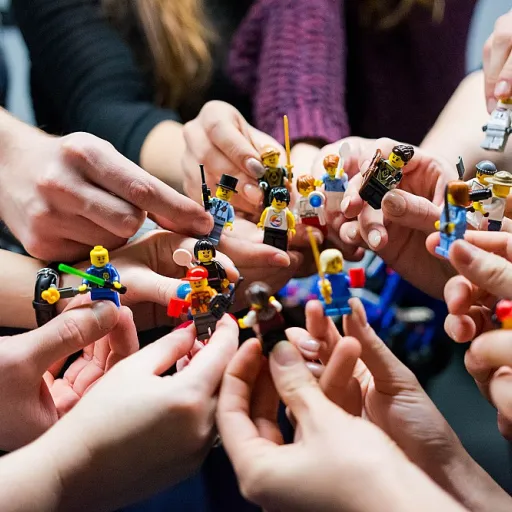
Understanding the ladder of accountability
What Does the Ladder of Accountability Mean?
The concept of the ladder of accountability is a practical way to understand how people and teams handle responsibility in continuous learning. Imagine a ladder, where each rung represents a different level of accountability. At the bottom, you find behaviors like making excuses or blaming others when things go wrong. As you climb higher, you see more ownership, problem solving, and a willingness to take action.
This ladder isn’t just a metaphor. It’s a tool used in talent management and leadership development to help people recognize where they stand and how they can move up. The higher you climb, the more you shift from avoiding responsibility to actively finding solutions and making things happen. This shift is crucial for both personal life and professional growth.
Why Accountability Matters in Learning
In the context of continuous learning, accountability is about more than just doing the work. It’s about being accountable for your own progress, acknowledging setbacks, and taking steps to improve. When a person acknowledges their role in a problem, they’re already climbing the ladder. This mindset builds trust within teams and encourages leaders to set a positive example.
- True accountability means moving past excuses and focusing on finding solutions.
- Each level of the ladder brings you closer to leadership accountability and effective problem solving.
- When employees and leaders take responsibility for their actions, it builds trust and strengthens the whole team.
Understanding where you or your team are on the accountability ladder is the first step toward making meaningful changes. For those looking to support this process, using tools like a drafter interview feedback form can help identify current levels of accountability and areas for growth.
As you move through the next stages, you’ll see how personal responsibility and leadership play a role in climbing to the top rungs of the ladder, and how to create a culture where everyone is committed to making things happen.
Recognizing personal responsibility in learning
Why Personal Ownership Matters in Learning
Climbing the ladder of accountability starts with recognizing that responsibility in learning is personal. Each person, whether part of a team or working independently, must acknowledge their role in their own development. This sense of ownership is the first rung on the accountability ladder. When individuals accept that their progress depends on their actions, they move away from making excuses and blaming external factors.
From Excuses to Action: The Shift in Mindset
At lower levels of accountability, it’s common to hear phrases like “things happen” or “it’s not my fault.” This mindset keeps people stuck, unable to climb higher. True accountability isn’t about avoiding mistakes; it’s about how a person responds when problems arise. When someone acknowledges a problem and takes responsibility for their actions, they begin to build trust within their team and with leaders. This shift is essential for effective problem solving and for finding solutions that lead to growth.
Responsibility Actions Build Trust
Leadership accountability is not just for those in formal leadership roles. Every person can demonstrate leadership by taking responsibility for their learning journey. When employees or team members consistently own their actions, it creates a culture where trust grows and teams function better. This is especially important in talent management, where the higher you climb on the ladder, the more you inspire others to do the same.
- Ownership at every level builds trust and accountability.
- Moving past making excuses leads to better problem solving.
- Accountability in personal life translates to stronger teams at work.
For those seeking practical ways to support responsibility actions and climb the ladder of accountability, using structured systems can help. Explore how a system for corrective action requests can enhance your approach to continuous learning and support higher levels of accountability.
Moving from excuses to action
Shifting from Excuses to Ownership
When climbing the ladder of accountability, one of the most challenging transitions is moving from making excuses to taking ownership. At lower levels of the accountability ladder, it’s common for people to blame circumstances, other team members, or even a lack of resources for setbacks. This mindset can stall both personal growth and team progress, as it prevents individuals from recognizing their own responsibility in the learning process.
True accountability begins when a person acknowledges their role in the outcome, regardless of external factors. This shift is essential for problem solving and for building trust within teams. When employees or leaders stop making excuses and start finding solutions, they demonstrate leadership accountability and set a powerful example for others.
- Excuses keep you on the lower rungs of the accountability ladder, limiting your ability to make things happen.
- Ownership moves you higher up the ladder, where you can actively participate in finding solutions and driving results.
- Problem solving builds trust within teams and organizations, as people see you as someone who takes responsibility for actions and outcomes.
Leadership and talent management experts agree that the higher you climb on the ladder of accountability, the more you contribute to a culture of trust and performance. Leaders and employees alike must recognize that accountability isn’t just about avoiding blame—it’s about making a commitment to continuous improvement and being proactive in both personal life and work.
For those seeking inspiration to move beyond excuses and embrace true accountability, exploring inspiring storytelling quotes can provide motivation and practical wisdom for the journey.
Building habits that support accountability
Turning Intentions into Consistent Actions
Accountability in continuous learning is not just about recognizing what needs to be done—it’s about making sure it actually happens. Many people understand their responsibility, but the real challenge is moving from intention to consistent action. This is where building supportive habits comes in. Habits are the daily routines and choices that help you climb the ladder of accountability, one rung at a time.
Why Habits Matter for Accountability
Habits are the foundation of true accountability. When you create routines that reinforce your learning goals, you make it easier to stay on track, even when motivation dips. This approach helps you avoid making excuses and instead focus on finding solutions to problems that arise. Over time, these habits build trust—both with yourself and with others in your team or learning community.
- Ownership of Actions: Regular habits reinforce your sense of ownership and responsibility for your progress.
- Problem Solving: When setbacks occur, established routines make it easier to shift from making excuses to actively finding solutions.
- Leadership Accountability: Leaders who model good habits set a standard for teams, encouraging employees to take responsibility for their own learning.
Practical Steps to Build Accountability Habits
Climbing higher on the accountability ladder means making small, consistent changes. Here are some practical ways to build habits that support your learning journey:
- Set clear, achievable goals for each learning session.
- Schedule regular check-ins with yourself or your team to review progress.
- Document your learning activities and reflect on what works and what doesn’t.
- Celebrate small wins to maintain motivation and reinforce positive behaviors.
- Encourage open communication about challenges—this builds trust and helps everyone stay accountable.
As you move up the levels of accountability, remember that building habits is not about perfection. It’s about making steady progress, taking ownership, and being willing to adjust when things don’t go as planned. The higher you climb, the more you’ll see that accountability isn’t just a personal responsibility—it’s a leadership skill that benefits teams and organizations alike.
Overcoming setbacks and staying on track
Turning Setbacks into Stepping Stones
Setbacks are a natural part of any continuous learning journey. No matter how high you climb on the accountability ladder, challenges will arise. The difference between those who continue to grow and those who stall often comes down to how they respond when things don’t go as planned. When a problem appears, it’s easy to slip into making excuses or blaming circumstances. However, true accountability means acknowledging your role and taking ownership of the outcome. This level of responsibility isn’t just about admitting mistakes—it’s about actively seeking solutions and learning from each experience.- Recognize the setback: Accept what happened without shifting blame. This builds trust within teams and shows leadership accountability.
- Analyze the situation: Identify what went wrong and why. Was it a lack of preparation, unclear goals, or something else?
- Find solutions: Move beyond the problem by brainstorming ways to improve. This is where problem solving and finding solutions become essential skills.
- Take responsibility for actions: Implement changes and monitor progress. This demonstrates that you’re accountable and committed to climbing higher on the ladder of accountability.
Creating a culture of accountability in learning communities
Fostering Ownership and Trust in Learning Groups
When it comes to continuous learning, true accountability is not just an individual effort. It thrives in environments where people feel empowered to take ownership of their actions and outcomes. In learning communities—whether teams at work or groups of employees—building a culture of accountability means everyone is responsible for their own growth, but also for supporting others as they climb the ladder of accountability.
Encouraging Leadership at Every Level
Leadership accountability is not limited to those with formal titles. Every person in a learning community can demonstrate leadership by acknowledging problems, finding solutions, and moving past making excuses. When teams operate at the higher rungs of the accountability ladder, they actively seek ways to improve, share responsibility, and help others do the same. This approach builds trust and encourages a sense of shared purpose.
- Modeling ownership: Leaders and team members alike should demonstrate responsibility for their actions and outcomes. This sets the tone for others to follow.
- Open communication: Regular check-ins and honest feedback help identify problems early and promote problem solving, rather than blame or excuses.
- Recognizing progress: Celebrating when a person acknowledges their role in success or setbacks reinforces positive behaviors and motivates others to climb the ladder.
Practical Steps to Build Accountability in Teams
Creating a culture of accountability isn’t about strict rules. It’s about making things happen through shared responsibility and support. Here are some practical ways teams can foster this environment:
| Action | Impact on Accountability |
|---|---|
| Set clear expectations | Helps each person understand their role and what is expected at every level |
| Encourage ownership of learning goals | Builds trust and motivates individuals to take responsibility actions |
| Provide support for problem solving | Moves teams from making excuses to finding solutions together |
| Recognize and reward accountability | Reinforces positive behaviors and encourages others to climb the ladder |
When teams and leaders commit to these practices, they create an environment where accountability isn’t just a buzzword. It becomes part of the culture, helping everyone reach higher levels of growth—both at work and in personal life. The higher you climb the ladder of accountability, the more you’ll see talent management, trust, and problem solving become second nature in your learning community.












